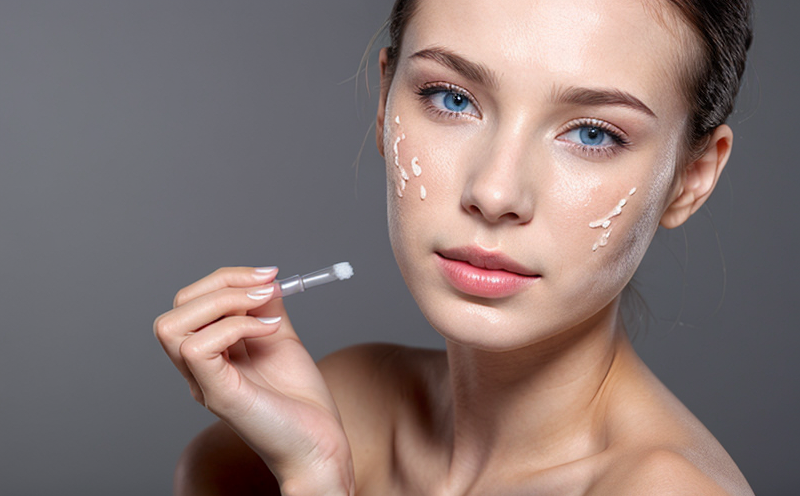Cumulative Irritation Patch Test for Cosmetic Products
The Cumulative Irritation Patch Test is a critical procedure in cosmetic product development and compliance. This test assesses whether prolonged contact with the skin leads to irritation, which can occur due to repeated or continuous exposure over extended periods. This is particularly important given that many cosmetic products are designed to be used repeatedly over time, such as face creams, lotions, and body washes.
The cumulative irritation patch test is essential for ensuring consumer safety while adhering to regulatory standards like the Cosmetics Directive (EC) No 1223/2009. The test evaluates the potential of a cosmetic product to cause skin irritation over time by assessing its effect on the skin's integrity and functionality.
The primary goal is to identify any ingredients that may induce inflammation, redness, or other signs of irritation when used repeatedly. By understanding these effects, manufacturers can make informed decisions about formulation adjustments to enhance safety without compromising product efficacy.
During this testing process, a patch containing the cosmetic product in question is applied to the skin for an extended period. This allows for the assessment of cumulative irritation over time, which is crucial because not all irritants cause immediate visible effects but may accumulate and lead to issues with prolonged use.
The test results are compared against established thresholds defined by regulatory bodies such as the European Union's Cosmetics Directive. Compliance with these standards ensures that products meet stringent safety requirements before being made available for consumer purchase.
Understanding the cumulative irritation patch test is essential for quality managers, compliance officers, R&D engineers, and procurement teams who are responsible for ensuring product safety throughout all stages of development and manufacturing.
Scope and Methodology
| Test Duration: | Up to 7 days or as required by the regulatory body |
|---|---|
| Test Specimen: | Cosmetic products designed for prolonged skin contact, such as lotions, face creams, and body washes. |
| Instrumentation: | Skin irritation chambers with controlled environmental conditions including temperature and humidity. |
| Test Parameters: | - Duration of application: Typically 24 hours per day for up to 7 days. - Specimen preparation: Application of the cosmetic product onto a patch, which is then adhered to the skin using medical-grade adhesive tape. - Observation period: Regular checks are conducted during and after the test duration to monitor any signs of irritation. |
|---|
Quality and Reliability Assurance
The Cumulative Irritation Patch Test is subject to strict quality control measures that ensure reliable results. These include rigorous calibration of testing equipment, standardization of specimen preparation procedures, and adherence to international standards such as ISO 10993-10.
Our laboratory employs highly trained technicians who follow standardized protocols meticulously to minimize variability in test outcomes. This ensures consistency across tests conducted under similar conditions, thereby enhancing the reliability of the results reported.
We also maintain comprehensive documentation practices that trace each step of the testing process from sample receipt through final analysis and reporting. This approach not only supports quality assurance but also facilitates reproducibility for future reference or audits.
Our commitment to maintaining high standards is reflected in our ISO 17025 accreditation, which certifies our technical competence across various fields within the laboratory. Additionally, we participate actively in proficiency testing programs organized by recognized bodies such as AATCC (American Association of Textile Chemists and Colorists) to further validate our capabilities.
Environmental and Sustainability Contributions
The Cumulative Irritation Patch Test plays a role in promoting environmental sustainability within the cosmetics industry by helping manufacturers develop safer products. By identifying potentially harmful ingredients early on, companies can reformulate their products to reduce risks without compromising quality.
This proactive approach contributes positively to both human health and planetary well-being by minimizing waste associated with non-compliant or recalled products. Moreover, it supports sustainable practices by encouraging responsible sourcing of raw materials that align with stringent safety standards.
Through our work in this area, we contribute towards the goals set forth by organizations like UN Global Compact which advocate for responsible stewardship of natural resources and respect for human rights throughout supply chains.





